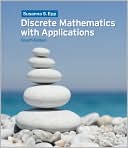Category Books
- Fiction Books & Literature
- Graphic Novels
- Horror
- Mystery & Crime
- Poetry
- Romance Books
- Science Fiction & Fantasy
- Thrillers
- Westerns
- Ages 0-2
- Ages 3-5
- Ages 6-8
- Ages 9-12
- Teens
- Children's Books
- African Americans
- Antiques & Collectibles
- Art, Architecture & Photography
- Bibles & Bible Studies
- Biography
- Business Books
- Christianity
- Computer Books & Technology Books
- Cookbooks, Food & Wine
- Crafts & Hobbies Books
- Education & Teaching
- Engineering
- Entertainment
- Foreign Languages
- Game Books
- Gay & Lesbian
- Health Books, Diet & Fitness Books
- History
- Home & Garden
- Humor Books
- Judaism & Judaica
- Law
- Medical Books
- New Age & Spirituality
- Nonfiction
- Parenting & Family
- Pets
- Philosophy
- Political Books & Current Events Books
- Psychology & Psychotherapy
- Reference
- Religion Books
- Science & Nature
- Self Improvement
- Sex & Relationships
- Social Sciences
- Sports & Adventure
- Study Guides & Test Prep
- Travel
- True Crime
- Weddings
- Women's Studies
Discrete Mathematics with Applications » (4th Edition)

Authors: Susanna S. Epp
ISBN-13: 9780495391326, ISBN-10: 0495391328
Format: Hardcover
Publisher: Cengage Learning
Date Published: August 2010
Edition: 4th Edition
Author Biography: Susanna S. Epp
Susanna S. Epp received her Ph.D. in 1968 from the University of Chicago, taught briefly at Boston University and the University of Illinois at Chicago, and is currently Vincent DePaul Professor of Mathematical Sciences at DePaul University. After initial research in commutative algebra, she became interested in cognitive issues associated with teaching analytical thinking and proof and has published a number of articles and given many talks related to this topic. She has also spoken widely on discrete mathematics and has organized sessions at national meetings on discrete mathematics instruction. In addition to Discrete Mathematics with Applications and Discrete Mathematics: An Introduction to Mathematical Reasoning, she is co-author of Precalculus and Discrete Mathematics, which was developed as part of the University of Chicago School Mathematics Project. Epp co-organized an international symposium on teaching logical reasoning, sponsored by the Institute for Discrete Mathematics and Theoretical Computer Science (DIMACS), and she was an associate editor of Mathematics Magazine from 1991 to 2001. Long active in the Mathematical Association of America (MAA), she is a co-author of the curricular guidelines for undergraduate mathematics programs: CUPM Curriculum Guide 2004.
Book Synopsis
Susanna Epp's DISCRETE MATHEMATICS WITH APPLICATIONS, FOURTH EDITION provides a clear introduction to discrete mathematics. Renowned for her lucid, accessible prose, Epp explains complex, abstract concepts with clarity and precision. This book presents not only the major themes of discrete mathematics, but also the reasoning that underlies mathematical thought. Students develop the ability to think abstractly as they study the ideas of logic and proof. While learning about such concepts as logic circuits and computer addition, algorithm analysis, recursive thinking, computability, automata, cryptography, and combinatorics, students discover that the ideas of discrete mathematics underlie and are essential to the science and technology of the computer age. Overall, Epp's emphasis on reasoning provides students with a strong foundation for computer science and upper-level mathematics courses.
Table of Contents
1. SPEAKING MATHEMATICALLY. Variables. The Language of Sets. The Language of Relations and Functions. 2. THE LOGIC OF COMPOUND STATEMENTS. Logical Form and Logical Equivalence. Conditional Statements. Valid and Invalid Arguments. Application: Digital Logic Circuits. Application: Number Systems and Circuits for Addition. 3. THE LOGIC OF QUANTIFIED STATEMENTS. Predicates and Quantified Statements I. Predicates and Quantified Statements II. Statements with Multiple Quantifiers. Arguments with Quantified Statements. 4. ELEMENTARY NUMBER THEORY AND METHODS OF PROOF. Direct Proof and Counterexample I: Introduction. Direct Proof and Counterexample II: Rational Numbers. Direct Proof and Counterexample III: Divisibility. Direct Proof and Counterexample IV: Division into Cases and the Quotient-Remainder Theorem. Direct Proof and Counterexample V: Floor and Ceiling. Indirect Argument: Contradiction and Contraposition. Indirect Argument: Two Classical Theorems. Application: Algorithms. 5. SEQUENCES, MATHEMATICAL INDUCTION, AND RECURSION. Sequences. Mathematical Induction I. Mathematical Induction II. Strong Mathematical Induction and the Well-Ordering Principle. Application: Correctness of Algorithms. Defining Sequences Recursively. Solving Recurrence Relations by Iteration. Second-Order Linear Homogeneous Recurrence Relations with Constant Coefficients. General Recursive Definitions and Structural Induction. 6. SET THEORY. Set Theory: Definitions and the Element Method of Proof. Set Identities. Disproofs and Algebraic Proofs. Boolean Algebras, Russell's Paradox, and the Halting Problem. 7. PROPERTIES OF FUNCTIONS. Functions Defined on General Sets. One-to-one, Onto, Inverse Functions. Composition of Functions. Cardinality, Sizes of Infinity, and Applications to Computability. 8. PROPERTIES OF RELATIONS. Relations on Sets (add material about relational databases). Reflexivity, Symmetry, and Transitivity. Equivalence Relations. Modular Arithmetic with Applications to Cryptography. Partial Order Relations. 9. COUNTING. Counting and Probability. The Multiplication Rule. Counting Elements of Disjoint Sets: The Addition Rule. The Pigeonhole Principle. Counting Subsets of a Set: Combinations. r-Combinations with Repetition Allowed. Pascal's Formula and the Binomial Theorem. Probability Axioms and Expected Value. Conditional Probability, Bayes' Formula, and Independent Events. 10. GRAPHS AND TREES. Graphs: An Introduction. Trails, Paths, and Circuits. Matrix Representations of Graphs. Isomorphisms of Graphs. Trees: Examples and Basic Properties. Rooted Trees. Spanning Trees and a Shortest Path Algorithm. 11. ANALYZING ALGORITHM EFFICIENCY. Real-Valued Functions of a Real Variable and Their Graphs. O-, ?-, and ?-Notations. Application: Efficiency of Algorithms I. Exponential and Logarithmic Functions: Graphs and Orders. Application: Efficiency of Algorithms II. 12. REGULAR EXPRESSIONS AND FINITE STATE AUTOMATA. Formal Languages and Regular Expressions. Finite-State Automata. Simplifying Finite-State Automata.
Subjects
 Mathematics
Mathematics  Computer Mathematics
Computer MathematicsScience & Nature
 All Science & Nature
All Science & Nature  Mathematics
MathematicsNonfiction
 Science & Nature
Science & Nature  Mathematics
MathematicsNonfiction
 Science & Nature
Science & Nature  All Science & Nature
All Science & Nature
